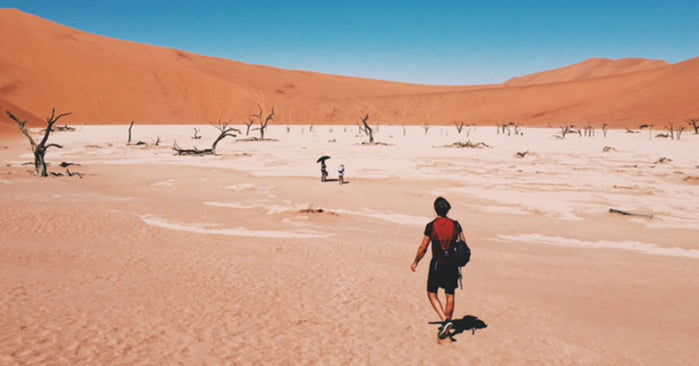I find that many people forget to do proper preparation and planning when they feel that their event is quite small, or when they are too familiar with what they do.
When I coach people (life, leadership, and executive coaching) I take them through what I call a Life Sphere of all the ‘touch points’ that they have in their life. There are 12 of these which apply pretty much to everyone, such as Living Conditions, Financial Status, and Health & Fitness. Some of the people that I coach are professional athletes and for them I have an additional 12 points that I work on with them.
These points cover an athlete’s overall preparation for the event, their sport, and can be used by everyone not only professional athletes.
The touch points are the following:
- Preparation – this refers to the morning of the event. I have found that this kind of plan provides me with a calm and peaceful state of mind when I start running. I do not want to be late, in a panic, have forgotten something etc. because when this happens you start the race running at a pace that is wrong because your mind is elsewhere. This can be something as simple as making sure that you have set your alarm for the correct time to wake up, or two alarms, to this kind of routine.
- Distractions relate to all the touch points on the Life Sphere that I do with my clients. What are the things that are going on in life outside of your athletics routine that will distract your mind so that you are unable to apply yourself fully to your training and performance on the day of the event.
- Nutrition – know that you need it; know what works for you and what doesn’t work for you; use it during your training; what works for your friends or what people say is the best product on the market does not necessarily mean that it will suit you.
- Training Plan – yes, pretty much everyone will have a training plan, but is it your training plan and is it working for you. There are many helpful yet generic training plans out there, it almost certainly requires some form of even minor adaptation and customisation for your particular circumstances. Don’t just blindly follow a training plan without evaluating how it is working for you and getting you to achieve the progress and results that you are after.
- Specifics: for a runner, specifically if it is going to be a very long run, a multi-day run, a wet run, a desert run … you need to look after your feet. I have a suspicion that people who get bad blisters from running haven’t put in the preparation to look after their feet. Here’s the routine that I followed: months before the event I do many runs in the same brand and size of shoe that I intend using for my long run. I see what happens on the very first run with brand new shoes, and what develops as the shoes get older. Every morning I first apply a very thin layer of lubrication to my entire foot from the ankle down, similar to Vaseline called Loobit. On goes my long compression sock; on goes the shoe gaiter up my calf; on goes my running shoe; tie the laces loosely so that I can easily move my foot and wiggle my toes; affix the gaiter to the shoe with the Velcro strips.
- Mind Training – I knew for certain every day when I was out there running long distances that my body was going to get very sore and that I was often going to want to stop and give up because of this. In order for me to be able to deal with this I needed to experience it, often, and learn how to deal with it. So the major part of my training was for me to do my runs at times and in conditions that would challenge me mentally. I would run 12 km every day along exactly the same route, boring, in bad weather, at night, at the end of the day when I was tired, and when the going got tough I would add in a sand section to make it tougher. Every week I’d add on another day of running before having a rest day. I would also set out on my own into the mountain in extremely bad and freezing cold weather and not allow myself to get home unless I’d been out there for 3 hours. This wasn’t fitness training, this was to train my mind, and always when the waves of despair and tears of loneliness came I would add on another few km and I’m not exactly sure who I was talking to, probably myself, but I would grit my teeth and say, sometimes shout – you will not break me!
- Other Resources – There is a lot of the usual stuff that almost everyone will do when preparing for a marathon, or a desert run, but something that helps considerably is to look beyond this to find other resources that can help you. If you can find someone who has done it before, or has some experience in the field, make contact with them and ask them.
- Event Plan – this refers to the day of the race, and quite easy to visualise if you think of a group of 800 m athletes running around a track – do I start fast, get out in front, or tuck in behind the front runner, in behind the front pack, sit at the back and come through strongly at the finish etc.? For your marathon – am I going for a podium position, a medal, a PB, or to beat 4 hours, or is this a training run and the time doesn’t matter, am I going to try something new such as walking every second water table, maybe push to do a fast first half marathon and see what happens from there?
- Recovery – an often very underutilised piece of equipment in a runner’s toolbox, rest and recovery. Not only to ensure that when you plan your training program that you put in rest days, but that these are recovery days too.
- Plan B – this is the ‘what if’ scenario that needs to be planned in case something unplanned or untoward happens. What are you going to do if it so happens that you either cannot even do the event that you’ve been planning for, you get ill or injured or it’s cancelled due to bad weather, or if you have a bad day and don’t achieve the results you’ve been planning and training for – it can happen. If and when it does happen … what’s the plan? You don’t want this big disappointment to be a falling off the cliff happening. Make sure that it’s not all lost effort and you channel your preparation in another direction, or towards another event in a few weeks time, or the following year.
- Other relates to sideways and out of the box thinking. Take a helicopter view of yourself, the event, the participants, the venue, the weather conditions, everything and see if anything else pops up that could be added to contribute to your preparation and planning.
- And lastly – Review. After every single race or event do a review of the entire Sports Sphere plus your performance on the day, your mental state before, during, and after, and any and all external factors and circumstances. Learn from the experience and apply checks, balances, and a good old Navy term A’s & A’s, additions and alterations to your plan.






Leave a comment (all fields required)